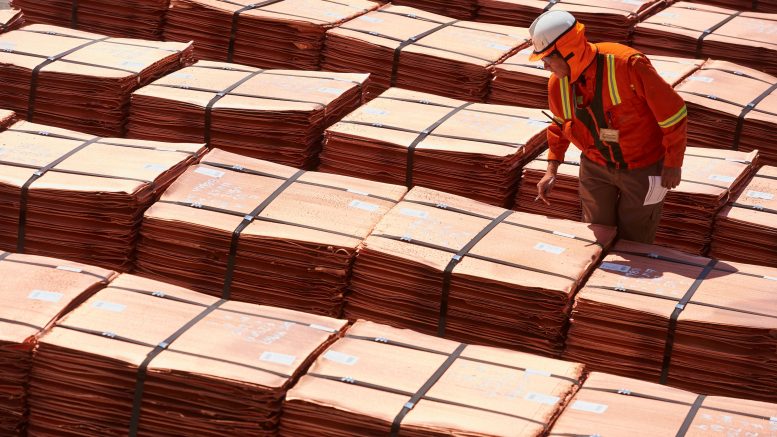The International Copper Study Group (ICSG) has released its copper market forecast for 2020-21 and expects this year will mark the second consecutive year of decline in world copper mine production.
After a drop of 0.2% in 2019, the ICSG anticipates that global copper mine production will fall by about 1.5% this year, before growing by about 4.5% next year.
The forecast is in line with estimates from Colin Hamilton, a mining analyst at BMO Capital Markets. The London-based analyst has projected a 1.7% reduction of worldwide copper mine production in 2020, with production rising by 4.1% in 2021.
The decline in 2019 was mainly due to operational issues, in particular in Indonesia, ICGS said, while this year’s drop is due primarily to temporary mine closures caused by the Covid-19 pandemic, most notably in Peru.
Lower copper production in 2020, however, will be partially offset by additional output from newly commissioned mines, ICGS said, including Russian Copper Company’s Tominskoye mine and the Deziwa copper-cobalt mine in the Democratic Republic of the Congo (DRC), which went into production in January. Deziwa is a joint-venture between the DRC’s state-owned Gecamines and China Nonferrous Metal Mining Company.
“Additional output from new projects, including Tominskoye and Deziwa, coupled with that from ramp-up mines such as Cobre de Panama and a significant recovery in Indonesian output will partially offset the reductions resulting from the pandemic,” the group said in a statement.
Looking ahead to 2021, it said, “output is expected to benefit from a recovery from the constrained operating levels of 2020 and increased supply resulting from the ramp-up of recently commissioned mines and expansions as well as from the planned start-up of larger projects including Kamoa Kakula, the Spence sulphide project and Lone Star.”
Ivanhoe Mines’ (TSX: IVN; US-OTC: IVPAF) Kamoa Kakula project in the DRC, is slated to begin production in the third quarter of 2021. BHP’s (NYSE: BHP; LSE: BHP) Spence sulphide mine in Chile is slated to start production in 2021, and Freeport McMoRan’s (NYSE: FCX) Lone Star mine in Arizona is on track to start production by the end of this year.
Refined copper production
Following stagnant output in 2019, world refined copper production is expected to increase by about 1.5% in 2020 and the same percentage in 2021, the ICSG said.
“A significant recovery in Chilean and Zambian output is forecast following temporary shutdowns for smelter upgrades in 2019,” it said. “In addition, a strong recovery is anticipated in Japan and a number of EU countries following a series of smelter maintenances in 2019. Electrowinning production in the Democratic Republic of the Congo is also expected to continue to increase.”
World secondary refined production (from scrap copper) is expected to decline by 5.5% due to a shortage of scrap metal in many regions, the ICSG reported. The shortage is due to decreased scrap generation, collection, processing, and transport resulting from the global lockdown.
Refined copper demand
According to the ICSG, world apparent refined copper usage, which is the sum of production plus imports minus exports, is expected to remain unchanged in 2020 and grow by about 1.1% in 2021.
BMO’s Hamilton considers the ICSG forecast of 1.1% “to be slightly conservative given the low 2020 base and recovery already seen,” and has forecast 4.4% growth.
ICSG forecasts global copper demand (excluding China) will decline by 9% in 2020, mainly due to pandemic-related lockdowns. The group said that this is due to anticipated falls in demand of 8% and 6% in the European Union and the United States, respectively, and significant reductions in India, Japan, and several countries in Southeast Asia. It forecasts global copper demand excluding China in 2021 will rise to one percent.
ICSG estimates a deficit of about 50,000 tonnes of copper this year and a surplus of about 70,000 tonnes in 2021.


Be the first to comment on "Global copper production to increase in 2021 after two years of declines: ICSG"